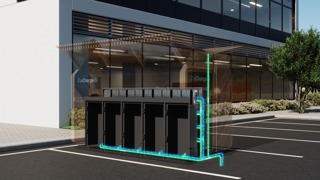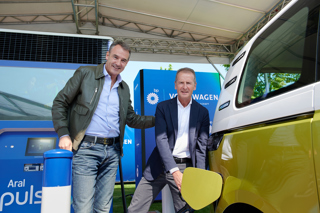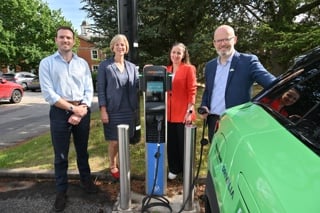By Andy Eastlake, chief executive of Zemo Partnership and deputy chair of the EV Energy Taskforce
With sales of electric vehicles (EVs) booming (despite the supply challenges the new car market is experiencing) it’s becoming ever clearer that an EV is the obvious choice for company car and van drivers with access to off-street parking.
However, the challenges faced by those without access to a dedicated home charger are now coming into sharp focus.
There’s no doubt that public charging needs to be further developed, but deciding how many chargers of what type and speed are needed – and when and where to place them - is the conundrum facing Government, industry and investors.
Some proponents are calling for millions of public chargers to be installed and for a ‘right to charge’ mandate but, in common with all such infrastructure, low utilisation can actually cause more problems than it solves.
So, the publication of the Government’s EV Infrastructure Strategy, closely followed by Charging the Future: Drivers for Success 2035 from the EV Energy Taskforce, could not have come at a more important time.
As you would expect, given the wide and deep collaboration which informed them, these documents share common themes and compatible recommendations.
Home charging is seen as the main solution for the car sector with en route rapid charging hubs (backed by the £950 million Rapid Charging Fund) supporting longer journey needs.
But the near-home needs of drivers without access to their own facilities, is becoming a hotbed of innovative solutions.
From a variety of apps enabling home charge points to be shared (for payment), to lamp post or ingenious kerbside solutions, or local rapid charging hubs where you charge your car while (sometimes) filling your shopping basket, the options are growing.
Users, too, are realising that there are different ways to charge effectively and conveniently, be that overnight, at their workplace, or on the way home.
What’s clear from the two publications is that all the options can – and should – co-exist but the business models and investment opportunities can be highly complex.
One key conclusion is that local solutions must have significant local input and control, so we see Government funds (such as those earmarked for local EV infrastructure through LEVI) now directed towards local support for both charging hardware and energy infrastructure, together with the skills to plan them.
With energy prices still in the headlines, perhaps one of the most important pieces of analysis from the EV Energy Taskforce looks at what drivers may have to pay for a charge and how that may influence how the infrastructure develops.
The combination of infrastructure cost and energy throughput will determine minimum charging prices, tending to drive provision towards local rapid charging hubs. However, users will have a vital say in how near-home provision develops and will decide how much more they’re willing to pay for convenience. Smart charging at public facilities should also have a part to play on prices.
For the EV transition to fully succeed, we’ll need accessible, near-home public charging provision available to users at a cost as close as possible to that of home charging.
That will mean ensuring the assets we install should have robust business cases, enabling the supply of electricity at reasonable cost.
There are many ways to achieve this, but driving down connection and hardware costs and complexity, while driving up utilisation – and aiming to build just ahead of need – is likely to deliver the infrastructure needed to energise the EV market for all.



















Login to comment
Comments
No comments have been made yet.